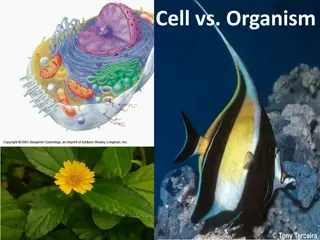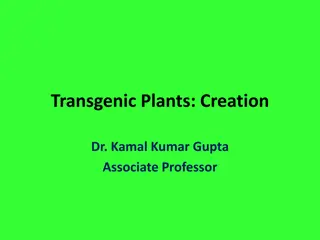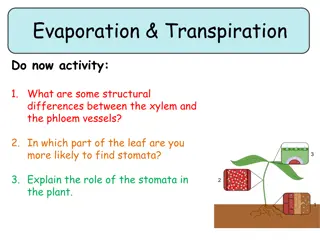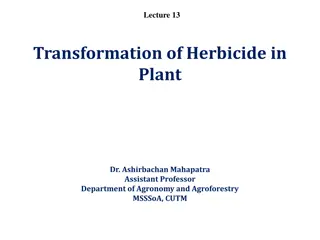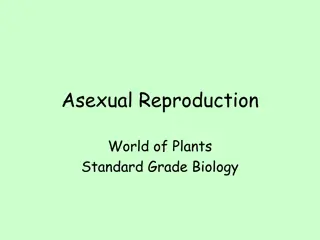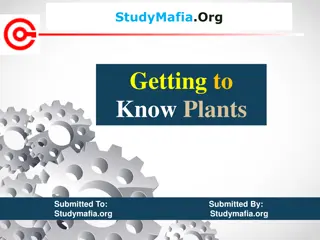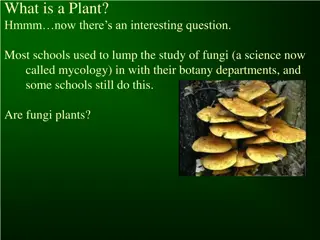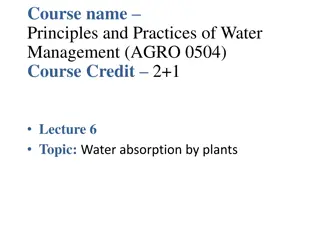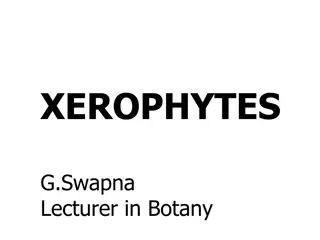Essential Role of Stomata in Plants
Certain parts in green plants are critical for various life processes, with stomata being essential for gaseous exchange. This article discusses the types and functions of stomata, emphasizing their role in transpiration, photosynthesis, and maintaining moisture balance.
Uploaded on Apr 15, 2025 | 0 Views
Download Presentation

Please find below an Image/Link to download the presentation.
The content on the website is provided AS IS for your information and personal use only. It may not be sold, licensed, or shared on other websites without obtaining consent from the author.If you encounter any issues during the download, it is possible that the publisher has removed the file from their server.
You are allowed to download the files provided on this website for personal or commercial use, subject to the condition that they are used lawfully. All files are the property of their respective owners.
The content on the website is provided AS IS for your information and personal use only. It may not be sold, licensed, or shared on other websites without obtaining consent from the author.
E N D
Presentation Transcript
Stomata by Subhamita Das
Introduction There are certain parts in all green plants which are essential and play a critical role in different life processes. Stomata is one of the essential parts that is involved in gaseous exchange. There are thousands of stomata on the surface of the leaves. Most of these are found on the lower side of the leaves.
Types of Stomata Anomocytic Stomata - They are surrounded by epidermal cells, which have a fixed shape and size. The stomata appear to be embedded in epidermal cells. There is no definite number and arrangement of cells surrounding the stomata. Anisocytic Stomata - Stomata are surrounded by three subsidiary cells having unequal sizes, one is smaller compared to the other two. Diacytic Stomata - The stomata are surrounded by a pair ofsubsidiary cells that are perpendicular to the guard cell. Paracytic Stomata - The stomata are continuously surrounded by two subsidiaries, which are arranged parallel to the stomatal pore and the guard cells. Gramineous Stomata - Each stoma possesses two guard cells, which are shaped like dumbbells. The subsidiary cells are parallel to the guard cells. The guard cells are found narrow in the middle and wider at the ends.
Functions of Stomata The main functions of stomata are: 1.Gaseous exchange- Stomatal opening and closure help in the gaseous exchange between the plant and surrounding. 2.It helps in transpiration and removal of excess water in the form of water vapour. 3.Stomatal closure at night prevents water from escaping through pores. 4.It maintains the moisture balance according to weather by opening and closing. 5.Stomata facilitate carbon dioxide uptake and release of oxygen during the process of photosynthesis.




